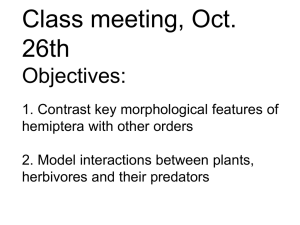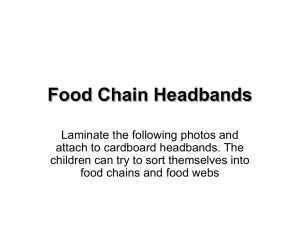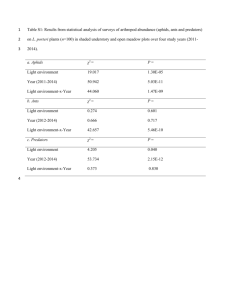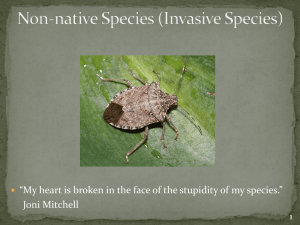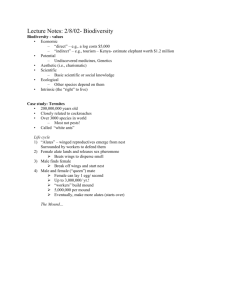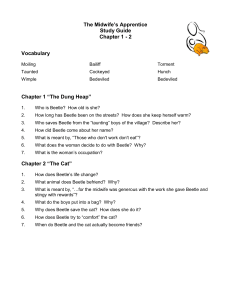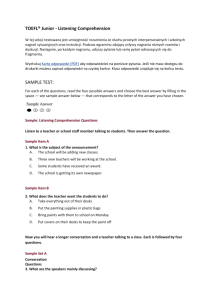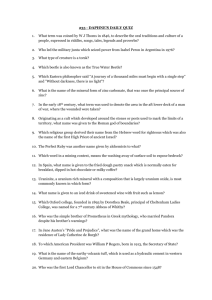Exam 3 on Wednesday 1. Bring the scantrons and no 2 pencils 2
advertisement
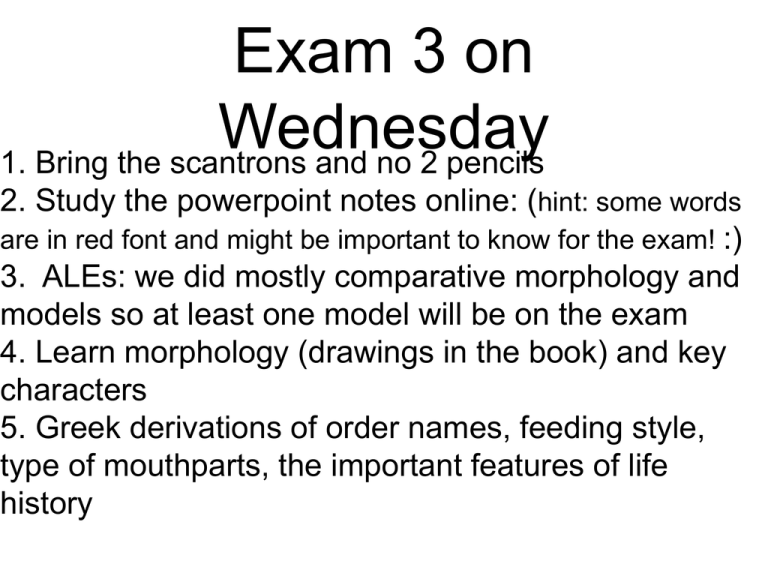
Exam 3 on Wednesday 1. Bring the scantrons and no 2 pencils 2. Study the powerpoint notes online: (hint: some words are in red font and might be important to know for the exam! :) 3. ALEs: we did mostly comparative morphology and models so at least one model will be on the exam 4. Learn morphology (drawings in the book) and key characters 5. Greek derivations of order names, feeding style, type of mouthparts, the important features of life history Plant-Aphid-Ant-Lady beetle plant (-) (+) aphid ant Aphids have a negative effect on the plants. Aphids benefit the ants by providing the ants with a food source. Plant-Aphid-Ant-Lady beetle (-) plant (-) (+) aphid ant (+) (+) (-) lady beetle (-) Class meeting Oct. 31st Objectives: 1. Distinguish among Megaloptera, Rhaphidioptera and Neuroptera 2. Contrast feeding styles and their respective benefits and costs 3. Graph relationships between plants, herbivores and predators ALE 1: (GW, ~7min) 1. Pick at least two key features unique to each order 2. What other order/orders do these insects remind you of? How will you distinguish them from the Megaloptera, Rhaphidioptera and Neuroptera? ALE 2: 1. All orders we’re talking about today are predaceous: what orders that we talked about before are strictly herbivorous? what orders feed strictly on dead matter? 2. Is it more advantageous to be predaceous or herbivorous? Why?
